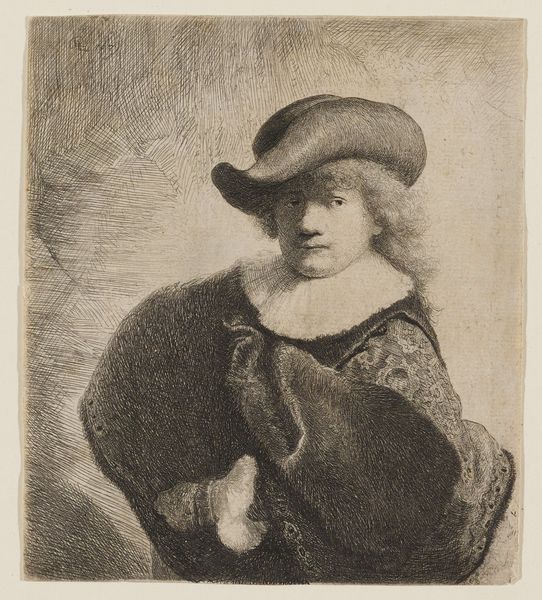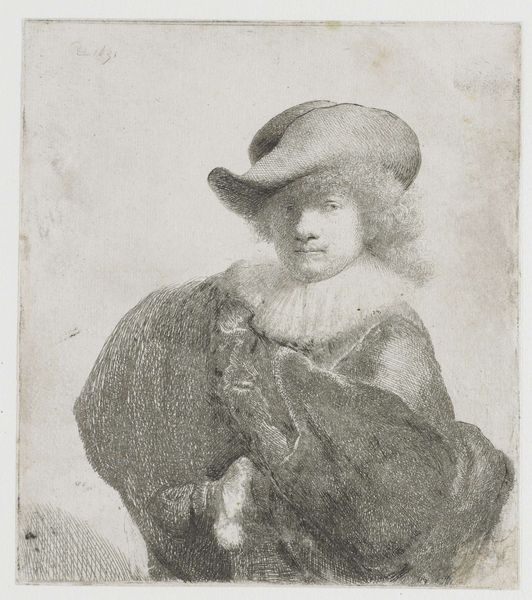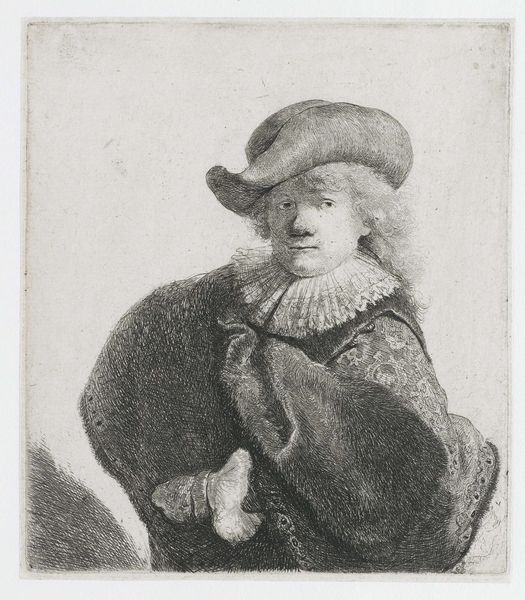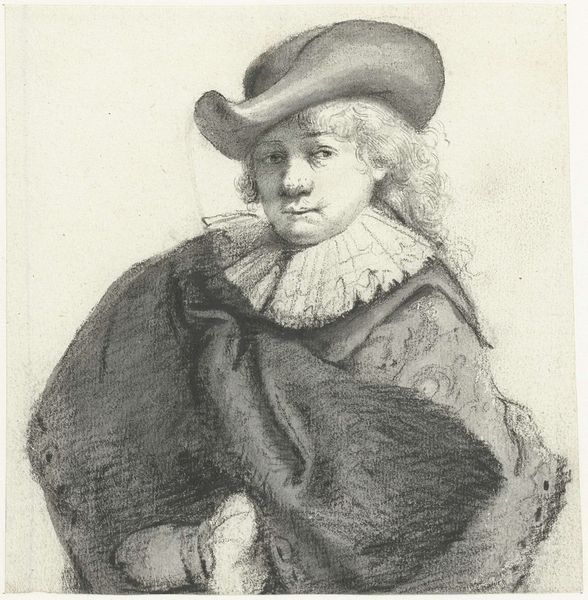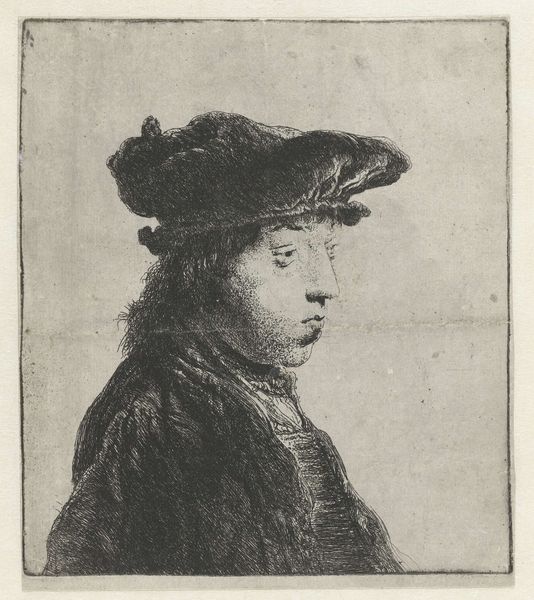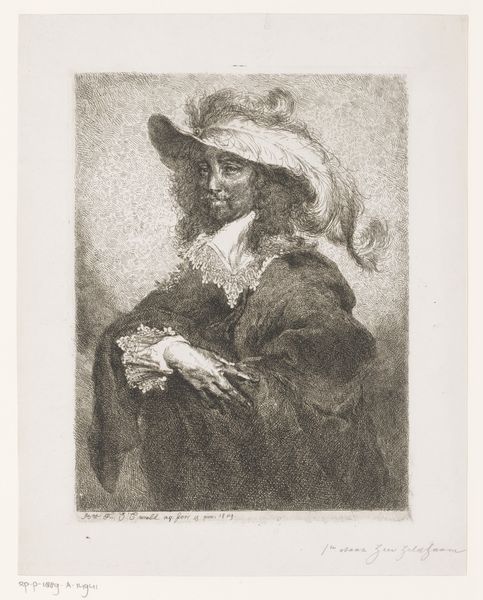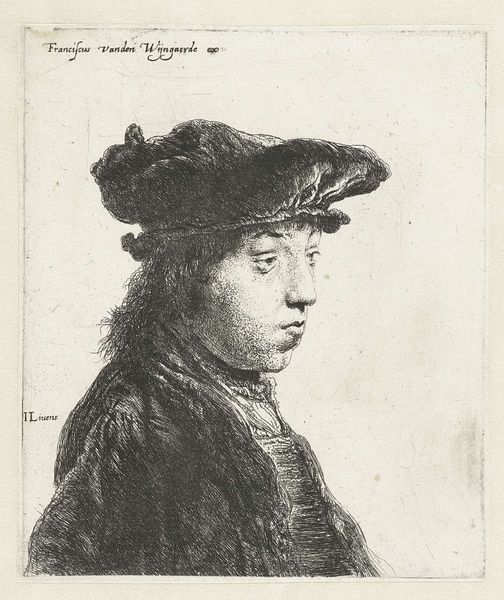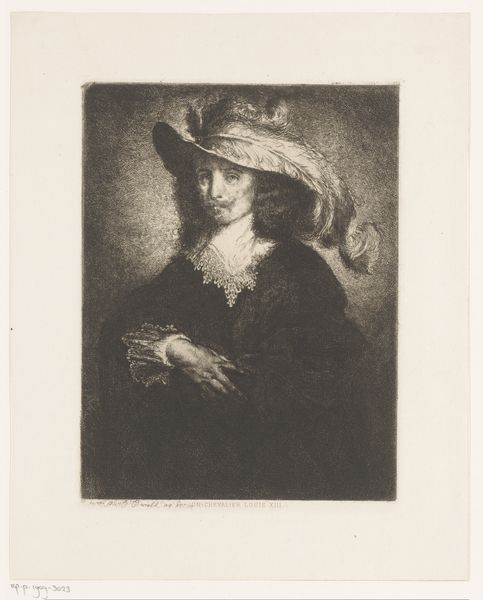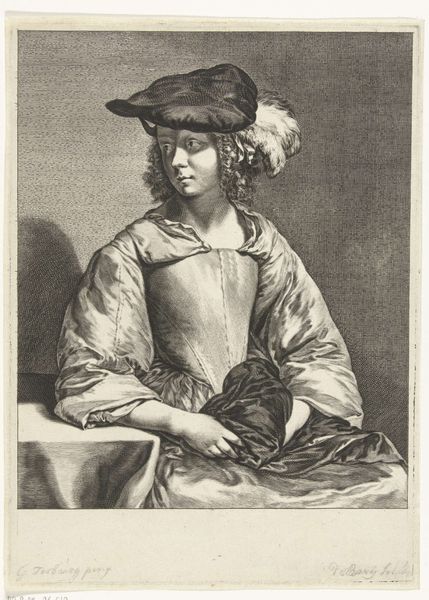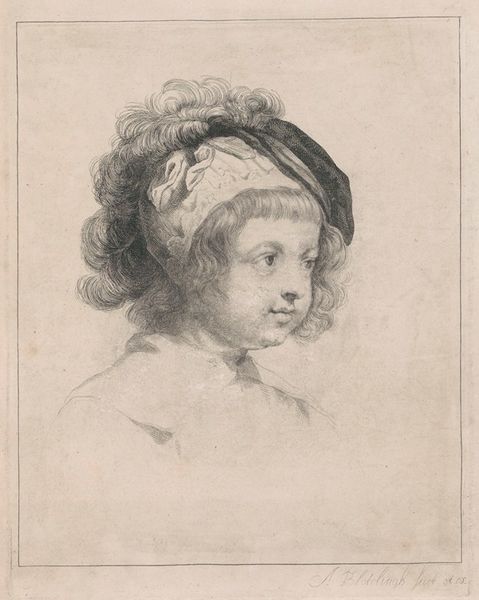
etching, intaglio
#
portrait
#
self-portrait
#
baroque
#
dutch-golden-age
#
etching
#
intaglio
#
charcoal drawing
#
figuration
#
portrait drawing
#
realism
Dimensions: height 148 mm, width 131 mm
Copyright: Rijks Museum: Open Domain
Rembrandt van Rijn created this self-portrait using etching, a printmaking technique that democratized image production in the 17th century. The process involves drawing with a needle on a metal plate coated with wax, then submerging the plate in acid, which bites away the exposed lines. Consider the lines that define Rembrandt's face and clothing. These weren't made with a brush, but through the labor-intensive process of repeated scratching and acid baths. It is worth remembering that the printing process allows for the distribution of one’s image to a mass audience. This etching is an example of an artist engaging with a more commercialized, reproducible form, challenging our conventional ideas about artistic production. The texture and tonality achieved through etching contribute to the overall richness of the image, blurring the boundaries between traditional fine art and more accessible craft forms. In the end, the choice of material and technique carries just as much meaning as the image itself.
Comments
rijksmuseum about 2 years ago
⋮
Rembrandt’s etchings rarely came into being in a single session. Certainly in the early years when he was still inexperienced, several steps were needed to achieve the results he had in mind. This self-portrait shows how he went about this. He began with the head, moved on to the torso and finally added the background.
Join the conversation
Join millions of artists and users on Artera today and experience the ultimate creative platform.
